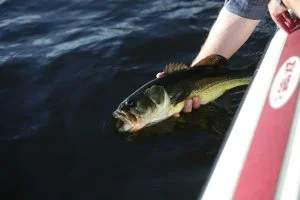 Let’s face it, bass fishing is one of the hardest angling disciplines out there. Catching a lot of big basses isn’t easy and it is every angler’s wish to master the technique. True mastery of bass fishing comes with years of experience but here are 5 basic tips that will help novice fishermen. In fact, these tips are something every angler should know so be sure to read carefully.
Let’s face it, bass fishing is one of the hardest angling disciplines out there. Catching a lot of big basses isn’t easy and it is every angler’s wish to master the technique. True mastery of bass fishing comes with years of experience but here are 5 basic tips that will help novice fishermen. In fact, these tips are something every angler should know so be sure to read carefully.
Learning how the weather influences bass
There are several factors that influence the behavior of bass and the weather is one of them. Learning how the weather impacts the fish is a great skill. For instance, it is useful to know that on cloudy days bass are more active and they are easily attracted to feed.
Clouds in the sky mean that you are going to pick up moving baits from the fishing basket. Topwater plugs, chatter baits, and spinnerbaits should be your “weapons of choice.” On a sunny day, however, bass will take cover behind and under rocks, expecting the food to come to them. This scenario is ideal for the use of a bottom bouncing bait like made from soft plastic.
Know the fish’s diet
One thing you need to know about the bass is that it will eat pretty much anything, much like a catfish. Their diet ranges from bluegill to baby ducks. This makes coming up with the right lure both difficult and hard. On the one side, you get to select the fishing lure you like the most but on the other hand, the fish might not be in for a rattling bait (for example) that particular day. You can ask anglers who are familiar with the waters or tell you what kind of food the local bass consumes the most. For instance, when the bass feeds on shad, you can throw a swimbait.
Put the lure where the fish is
Bass fishing 1-on-1 teaches us to throw the bait in the section of the water where the bass is. We’ve already mentioned that bass likes to take cover under underwater rocks, wood, grass, jetties, lily pads, etc. You should find these places on the lake or river where you are fishing and first try our luck there.
The reason why bass like to take cover under such objects is that they are laying an ambush for their prey. Of course, bass swims in open waters as well but you should not try to locate them while swimming because this can prove too difficult for beginners.
Learn to tie a knot
We assume you have basic knot-tying knowledge but when on the water, tying a knot might prove difficult. In order not to lose the bass because of a bad knot, you should learn to tie a single kind of knot and practice tying it every day. Once you can do it in seconds’ time, consider yourself ready to go bass fishing. You can learn some basics about knot tying and fly fishing here.
The wind is your friend
You should realize the importance of weather in bass fishing by now but no segment of the weather is more important than the wind. It is futile to try and catch bass on a windy day because it is impossible to hold the boat’s position, even when anchored.
However, your seaman’s skills will be put to the test because strong winds stimulate the bass to bite harder. Namely, the water’s surface is fluctuating on a windy day so much that the bass will not notice the waves your boat makes. Try to hold out the wind the next time you sail out, unless it’s a storm with gale-force winds, of course.
The 5 tips listed above are the most basic ones when it comes to bass fishing. Although fishing for bass is not easy, you shouldn’t be discouraged if you don’t catch anything the first couple of times you sail out. Persistence definitely pays off in bass fishing, as every true angler knows.

